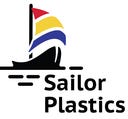Plastic Bottle Manufacturing Process- How PET Plastic Bottles are Made
Our homes certainly contain many products made of plastic, from PET plastic bottles, soda bottles to shampoo containers and containers for food. A version of polyester plastic that is Polyethylene Terephthalate (PET) has been around since 1833, but it took until the 1970s for the plastic bottle to gain popularity.
PET is the particular favorite for new businesses launching new products online or in retail stores, for producing any type of bottle that touches food or potable water. Why is PET the material of choice? Because the material produces bottles that are lightweight, yet strong and durable. Although the manufacturing process may vary from manufacturer to manufacturer, the basic method remains universal.
The Raw materials involved to make PET plastic bottles
As mentioned above, PET is a form of polyester which is primarily derived from petroleum hydrocarbons and is the result of polymerization. The producer creates a long chain of plastic molecules and the mixes are the result of the reaction between monomers ethylene glycol and terephthalate acid formed with several chemical compounds. The two materials, terephthalatic acid, and ethylene glycol is heated together, with the aid of a catalyst, that too in low vacuum pressure to produce molten PET.
With this combination, it was noticed that a strong material was produced without the addition of additives, especially when manufacturers noticed how lightweight it was. This meant that less material was needed for certain applications, explaining why most of the plastic bottles are made of PET material that seems relatively thin.
The Bottle making process
Pellets of PET and recycled plastics are loaded into special ovens and heated to the desired temperature so that it melts. The resin formed out of it is distributed into small pallets and then sent to the PET bottles manufacturer to make desired shapes and sizes for online supply.
This melted plastic is then injected into the small molds that are like a hollow shape to form long thin tubes. Some manufacturers might perform an injection blow molding process that is ideal for smaller plastic bottles. This method is generally used to mold a wide variety of polymers including PET and HDPE.
To make your understanding easier, here are a few of the common steps most bottle manufacturers follow for the making of PET bottles:
- Heating: The PET is heated up, which is melted down to its molten state, for being placed into the mold as stated above. Once the PET has settled and taken the desired shape as the mold it is referred to as parison.
- The parison is then cut into the desired length and cooled down.
- Once it is cooled systematically, the parison is then heated back up and placed into a mold that is shaped like the bottle or the shape that has to be manufactured. A tube is then placed that stretches the parison into the shape of the mold that surrounds it. This process leaves you with the perfect shape required for packaging.
- Then the bottle is removed from the mold and cooled down. The cooling process is also different among different manufacturers. Some opt for direct methods while others opt for indirect. For instance, in one of the methods, the water is pumped through the pipes surrounding the mold resulting in cooling the plastic down. In direct applications, carbon dioxide is used to cool down the plastic.
- After this, the bottles are trimmed down to the required size.
Note that, polymerization itself can be a complicated process. That is if the manufacturing plan is not established the process can lead to many inconsistencies between the different batches of the bottles prepared. So once the resin itself is manufactured, PET bottle manufacturing can begin.
